Jasonovich
Well-known member
Ok that makes sense, I guess it's worth experimenting and decide which you prefer.I'm lead to believe that the SMSL has a better clocking circuit than the Ultra.
Ok that makes sense, I guess it's worth experimenting and decide which you prefer.I'm lead to believe that the SMSL has a better clocking circuit than the Ultra.
So you take a digital signal from something that has a decent DAC, reclock it and then send it to another DAC?I'm lead to believe that the SMSL has a better clocking circuit than the Ultra.
Good point.I believe using anything but USB out from the Ultra you'll be using it's clock which totally defeats adding to the something else into the chain with to SMSL as the whole purpose is to use it's clock instead.
More than happy to be corrected if I'm wrong but I'm pretty sure I'm right.
Good point.
I figured all digital outs would be passthrough as long as the frequency and bit rate are supported for the selected output. If what you say is correct - and i have no reason to contradict you - then usb is preferred.
I think @TK421 confirmed that the SMSL only accepts usb input, so that problem is solved 🙃
Only if you fly from a Welsh airport?! 😂
It wasn’t Welsh lamb then? Lamb shank is a succulent dish though!Took a client out for lunch today in London ... had Lamb Shank from Haz in St Pauls ...... nowhere near Wales and no intention of a flight 🤣
Have to add it was F.....g lovely 😀
And cheaper than going to Sweetings for the fish option ...Took a client out for lunch today in London ... had Lamb Shank from Haz in St Pauls ...... nowhere near Wales and no intention of a flight 🤣
Have to add it was F.....g lovely 😀
Good stuff, really helpful information.@Witterings @TK421
I did a bit of research on jitter and clocking (because i like rabbit holes).
TLDR; the USB transport into a DAC is the cleanest.
The clock in a WiiM is considered quite good, but not high-end. Fortunately, modern DACs use various techniques (buffering, oversampling, PLL timing correction, ...) to re-clock and eliminate jitter before conversion to analog.
- USB is asynchronous, allowing the DAC to request data when it needs it. The DAC is the master clock, close to the D/A conversion processors. Lowest risk of jitter.
- S/PDIF is synchronous, meaning the streamer "forces" data into the DAC and includes its own clock in the signal. The DAC must re-clock the incoming signal and essentially work harder to recover any jitter introduced.
(Note: optical avoids electrical noise but has higher jitter risk than coaxial.)
Now i want to play with my DAC inputs too, though my ears probably won't pick up the difference.
Are you saying CD analog RCA into the Eversolo and then balanced to the Gustard amp?This way, I get a more direct signal from my CD player to my headphones and speakers using this option. The Gustard accepts two balanced XLR inputs and one RCA input, one XLR output and one RCA output.
The Eversolo Z8 DAC will have a balance output to Gustard and the SMSL CD player the RCA input. Gustard balanced XLR output to the active speakers. Sorted!
Sorry for the confusion, what I meant, is using the Gustard RCA input for CD player and coax input on DAC for the Streaming 😊Are you saying CD analog RCA into the Eversolo and then balanced to the Gustard amp?
That obviously works, but if you have the optical input on your DAC (it seems unused from your description), wouldn't it be easier to send CD out digitally (optical) rather than converting to analog before sending it to the Eversolo? (Honest question - i overthink things all the time.)
That Z8 has impressive reviews, by the way
I have R2R K11 setup in the dining room, you're right with the warm sound which I really like, not as resolving or transparent as the Eversolo Z8 but the FiiO is an amazing budget DAC and the best buck for <£130. The FiiO LPS PL50 power supply advances the sound quality further.Not wishing to hi-jack this thread ... more a subtle lange change .... the Warmer R2R from FIIO ... thoughts @Jasonovich
I am, but have nothing to compare it to so can't comment on sound characteristics compared to a standard DAC / Amp.I have R2R K11 setup in the dining room, you're right with the warm sound which I really like, not as resolving or transparent as the Eversolo Z8 but the FiiO is an amazing budget DAC and the best buck for <£130. The FiiO LPS PL50 power supply advances the sound quality further.
@RTHerringbone has big brother FiiO R2R K13 and he's totally impress with it.

 darko.audio
darko.audio
No worries, the tube DAC R2R, ah, yes the reviews are doing the rounds on YouTube.Have I confused myself / others ... as I was refering to this:

FiiO’s Warmer R2R DAC houses the holy trinity of audiophile catnip | Darko.Audio
An R2R DAC circuit, tubes and a mechanical VU meters.darko.audio
Oh definitely, if you align these with tube pre and powered amps, I suspect the sound will be a little loose and possibly lacking in solidity.Whilst I think it is an attractive product, sticking it before a tube pre and power amp is probably not what it is intended for.

